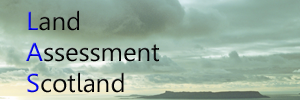The Cumbraes
Principal Sources
Great Cumbrae
RMS III (1565, 1566, 1567, 1568, 1569) 1536
RMS IV (377, 378) 1549, (1037) 1555-6, (2857) 1578-9
RMS V (2070) 1591-2, (2818) 1578
RMS VI (308, 309, 310, 313, 314, 315, 316, 317,) 1595
RMS VII (46) 1609, (571) 1611, (1714) 1617
RMS VIII (740) 1623, (1647) 1630
RMS IX (2124) 1649
RMS XI (950) 1666
RSS I (2255) 1511
AS I (105) 1620, (178, 179) 1621, (199, 210, 222) 1622, (481) 1673, (521, 522) 1674
AS II (775) 1650, (858) 1654, (1081) 1663, (1195) 1665, (1311) 1666
Bute Retours (5) 1562, (8) 1587), (20, 22) 1615, (24) 1617, (36) 1625, (54, 55) 1648, (56) 1649, (59) 1654, (60) 1658, (78) 1675, (86) 1685, (89) 1687, (92) 1696
Registrum Monasterii de Passelet pp 238-9, 241, 243
J Kirk, The Books of Assumption of the Thirds of Benefices, p 528, Oxford, 1995
RHP 14107 pp 81-4, Survey of Bute and part of Cumbrae, John Foulis, 1758-9
RHP 23107 Small MS sketch showing some boundaries
RHP 23900, Survey by John Home, 1772
W Lytteil, Guide-book to the Cumbraes, Carlisle, 1886
Little Cumbrae
ER V pp 84, 250, 363, 409
RMS III (1264) 1532-3, (1432) 1534, (1675) 1537
RMS IV (1674) 1565
RMS VI (405) 1595-6, (1838) 1607
RMS VII (591) 1611
RMS XI (595) 1664
Bute Retours (37) 1625, (62) 1661
AS II (373) 1631
RHP 3/89 Plan of Little Cumbrae 1789
The Cumbraes were undoubtedly part of the Norse Kingdom of the Isles. Why else did King Hakon come to Largs in 1263? However there is not a trace of the pennyland assessment system in the landscape – unless in the first element of Penmachrie. Nevertheless it seems reasonable to assume that the ounceland to merkland conversion ratio that operated in the Cumbraes was the same as that for Bute and Arran. I find 55¼m in the two Cumbraes so the true total was probably 60m or 10d. Little Cumbrae was probably one pennyland (or davach) at 6m while Great Cumbrae was 9 pennylands (or davachs) at 54m.

Leave a Reply